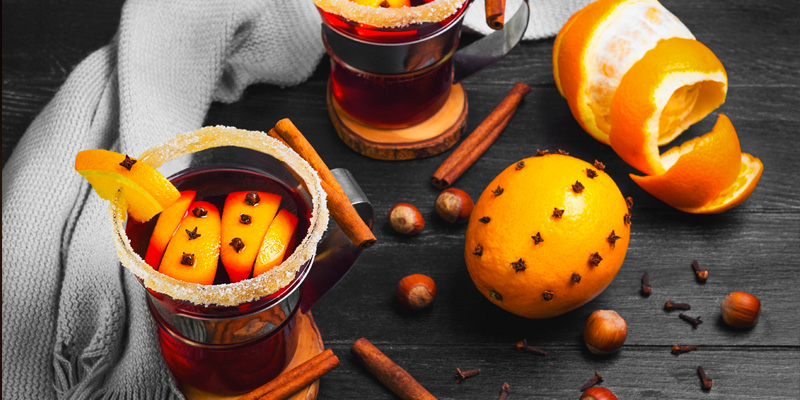
It’s cold and the snow is falling. You don’t have a fireplace to warm you, but you do have whiskey, tea, honey, and lemon. So you turn to the hot toddy, your old winter warmer friend. You drink with an appreciation that only viral praises and infinite lists of hot toddy variations married together on the internet can grant. But, believe it or not, your liquid friend has been centuries in the making.
The toddy as we know it started in British-controlled India. In the 1610s, dictionary.com notes, the Hindi word “taddy” meant “beverage made from fermented palm sap.” By 1786, taddy was officially written down and defined as “beverage made of alcoholic liquor with hot water, sugar, and spices.”
The British, with their persistent habit of appropriating from conquered cultures, took that beverage and claimed it as their own. In the cold winters and everyday dampness of northern England and Scotland, pubs would pour hot water into Scotch whisky. The United Kingdom’s trade routes with India made exotic spices routine, and pubs started throwing more than hot water and whisky into their drinks.
This history is, naturally, disputed. The other origin story tells the tale of an Irish doctor named Robert Bentley Todd, who ordered his patients to drink hot brandy, cinnamon, and sugar water. Most likely, the truth is a combination of the two stories, where doctors heard about the hot toddies from India and started incorporating them into prescriptions.
Regardless of the true origin, the drink made its way across the pond to the American colonies. Rum from the Caribbean and local brandy were the spirits of the day in America at the time. Thankfully for the colonists, the hot toddy lends itself well to variations and adaptations of local ingredients.
By the mid-19th century, the hot toddy had secured its place as the cure for the common cold. In an article called “How to Take Cold” in the Burlington Free Press in 1837, the hot toddy is heralded as a cure-all, just after a story about how to make beet sugar and before a history of Earth.
“If your child begins to snuffle occasionally, to have red eyes, or a little deafness; if his skin feels dry and hot, and his breath is feverish — you have now an opportunity of doing your work much faster than ever before,” the unnamed writer states. The first step is to avoid calling a doctor. Next, feed the child excessive amounts. Finally, make him drink.
“Ply him well with hot stimulating drinks, of which hot toddy is the best,” the writer recommends sagely.
The hot toddy has been an American staple ever since. Now there are cranberry hot toddies, grapefruit hot toddies, and whatever other addition and substitution you can imagine. It beats out all other hot drinks like mulled wine, bourbon apple cider, and even the newest trend, red wine hot chocolate. It’s survived the test of time for a reason: The hot toddy is the undeniable champion of hot drinks.
So the next time the weather outside gets frightful and you turn to your trusty friend the hot toddy, take an extra second and appreciate that warming mug of joy. The concept took a long journey to make it to your fireplace-less apartment.

